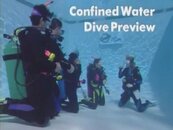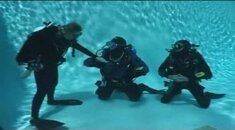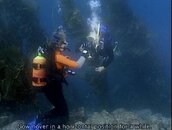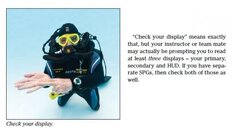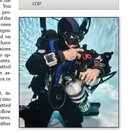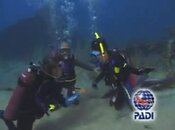Andy, the only thing I can come up with is that you are trying to make sure that no student who reads this thread would ever select a PADI class.
Why would I do that, when I am a PADI instructor?
Besides, I don't think that a transparent discussion about PADI standards should be discouraging to any student. We've already shown that PADI is addressing the issue - modernizing..evolving. Likewise, the qualities of globally consistent standards and contentious syllabus-following instructors are surely positive selling points for an agency.
I cannot think of any other reason why you are SO adamant about your analysis of what the standards say, and what they permit us to do.
Because that's how I've seen it interpreted by the vast majority of instructors I know. It's also how I was instructed to interpret the standards on my IDC.
I've also tried to provide a simple analysis on black-and-white text - rather than justify an alternative interpretation based upon intangible telephone calls.
It will be better when the written materials are changed. But I know from Peter's conversations with PADI HQ (and he has them frequently) and my observation of his conversations with the regional PADI rep and his CD, that what we are doing is not only legal, but viewed favorably.
I don't doubt there has been a change in PADI policy. I haven't denied that. I have merely attempted to explain why
historically, the vast majority of standards-abiding PADI instructors have adopted a late transition to neutral buoyancy.
I'd also point out that 'viewing favorably' doesn't amount to a change of policy. As mentioned, a true policy change would be (will be?) reflected in a concise and clear amendment to the standards that direct and guide instructors.
I've also pointed out that instructor liability has a bearing on the matter. PADI may 'view favorably' a change in practice, but as PADI itself states:
"Instructional systems provide legal protection for the instructor. When using an instructional system, the burden of proof in terms of educational validity and training adequacy shifts from you to the program designers. For risk management purposes, it’s important to use the system as prescribed. Deviating from a proven system will cause you to have to defend your actions and establish yourself as an instructional design authority. Instructional systems ensure that all course material and important objectives are covered in a proper sequence."
PADI Course Director Manual, Instructor Development Course Curriculum, Learning Instruction and the PADI System.
PADI standards define that instructional system. They also provide the proper sequence for the introduction of material and objectives. As I have referenced, current and previous editions of the PADI Instructor Manual have included buoyancy control skills within the prescribed sequence - thus they are part of the instructional system.
I don't think it matters what you, John, people on the phone at PADI HQ or myself think of this interpretation. What matters is how the majority...or even a minority, of PADI instructors have interpreted it. The clear trend for 'teaching from the knees' and a 'late transition to neutral buoyancy' seem to indicate exactly how many/most have interpreted the directions they are/have been given.
The PADI Guide to Teaching certainly doesn't dispel that notion, as it refers specifically to several confined water skills being taught. For instance:

Nor do the images consistently displayed in various PADI materials, up to and including the Tech Deep materials. In PADI's own words "
Instructional systems are efficient.... Divers know what to expect, thus come better prepared to participate in confined water and open water dives".
This is what they are led to expect...
From Open Water Confined:
and PADI Open Water Dives (PADI promo video):
Right through to technical diving (TecRec/Tech Deep student video):
Yes...technical students being taught valve drills... kneeling in a pool (students are shown kneeling throughout the video).... and
yes, the instructor IS standing...
Even in the PEAK PERFORMANCE BUOYANCY video, the instructor is shown
kneeling whilst teaching the student to hover....
Or in the newly released Tec40CCR student manual:
And even the Tec60CCR student manual:
(
any bets on kneeling pool skills in the sidemount manuals when they are released later this year?)
I just think it's obtuse to blame instructors for 'misinterpreting' the directions they were given.... and a message/policy that is hammered home in every form of media and manual throughout the entire instructional syllabus.
To change policy in the light of the 'Transition to Neutral Buoyancy' article is one thing... to apply some form of 'revisionist' approach to the notion... and blame instructors for 'misinterpreting' or 'failing to seek clarification' on those standards is, quite frankly insulting.. It wasn't "
what PADI were thinking all along".... it's what they're thinking
now.... and still considering putting onto paper and into standards...




